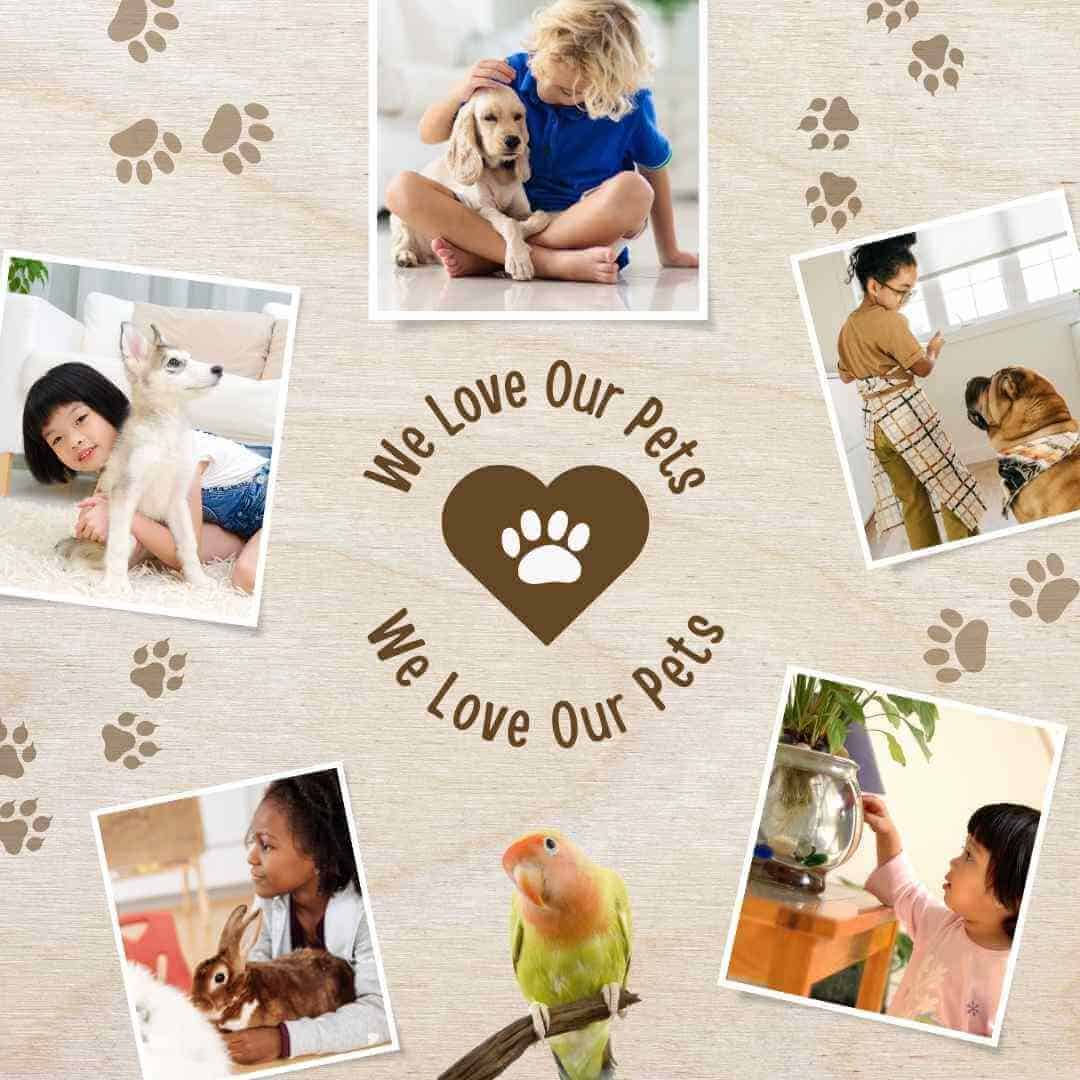The most recent pet census reveals a data noticeable uptick in the number of households that have embraced pet ownership. From traditional pets like dogs and cats to more unconventional choices such as reptiles and birds, pets have become an integral part of families worldwide. This article delves into the latest insights provided by the pet census, shedding light on the factors fueling the surge in pet ownership and its implications for businesses in the pet industry.

Pet Census Reveals The latest pet census highlights the growing trend of pet ownership across the world. Pets are no longer just companions; they are family members.
- Overview of the Newest Pet Census Rising Pet Ownership: The data from the pet census showcases that over 67% of households in the United States now have at least one pet, marking a significant increase from previous years. Similar trends have been observed in countries like the UK, Australia, and Japan, indicating a global rise in pet ownership.
- Diverse Pet Preferences: While dogs and cats remain the most popular choices, there has been a noticeable surge in the ownership of smaller pets like rabbits, hamsters, and even exotic species such as snakes and iguanas. Fish and birds continue to be favored options as well.
- Reasons Behind the Increase in Pet Ownership Emotional Benefits: One of the key drivers behind the surge in pet ownership is the emotional support that pets offer. In today’s fast-paced and stressful world, pets have become crucial companions, providing comfort, love, and companionship. Research has shown that pet owners often report lower stress levels, decreased anxiety, and heightened feelings of happiness.
- Pandemic Impact: The COVID-19 pandemic played a significant role in the increase in pet ownership. With lockdowns and remote work, people found themselves seeking solace from loneliness and boredom through adopting pets. This “pandemic pet boom” has had a lasting impact, with many new pet owners continuing to enjoy the company of their pets even as normalcy returns.
- Shift in Lifestyle Trends: Millennials and Gen Z are now leading the pet ownership demographic. These generations view pets as more than just animals; they consider them as cherished members of the family. Their lifestyle choices, which prioritize health, wellness, and quality of life, often include the companionship of a pet. Additionally, the trend of delaying marriage and children has led many individuals in these demographics to opt for pet companionship.
- Types of Pets Gaining Popularity Dogs: Dogs remain universally adored pets. Their loyalty, intelligence, and adaptability make them excellent companions for a range of individuals, from families to seniors. Small and medium-sized breeds are especially popular, particularly among city dwellers with limited living space.
- Cats: Cats follow closely behind dogs in terms of popularity. Their independent nature, low maintenance requirements, and affectionate demeanor make them ideal pets for those with busy schedules. Small Pets: Animals like hamsters, rabbits, guinea pigs, and fish are gaining traction, especially among families with children. These pets are often seen as a gentle introduction to pet ownership for young ones.
- Exotic Pets: The pet census also highlights a surge in the adoption of exotic pets such as reptiles, birds, and even insects. While these pets necessitate specialized care, their unique characteristics appeal to owners seeking a distinctive pet experience.
- Demographics of Pet Ownership Millennials and Gen Z Taking the Lead: The most recent census data reveals that millennials comprise the largest group of pet owners, closely followed by Gen Z. These demographics often treat pets as part of the family, investing in premium food, healthcare, and luxury accessories for their beloved companions.
- Pet Ownership Among Seniors: There has been a steady increase in pet ownership among seniors, as pets provide a sense of purpose, companionship, and routine that can be particularly beneficial for older individuals living alone. Therapy dogs and service animals are also becoming more prevalent, aiding seniors with daily tasks and emotional support. Urban vs.
- Rural Ownership: While rural areas traditionally have a higher percentage of pet-owning households, urban pet ownership is on the rise. The availability of pet-friendly amenities, parks, and services has made it easier for city residents to incorporate pets into their lives.
- The Economic Influence of the Pet Industry Thriving Pet Industry: The rise in pet ownership has significantly impacted the economy. The global pet industry is flourishing, encompassing a wide array of products and services such as pet food, grooming, healthcare, pet tech, accessories, and training services. In 2023, the pet industry exceeded $200 billion in value, with further growth anticipated.
- Pet Food and Nutrition: Pet owners are increasingly mindful of their pets’ nutritional needs, leading to a surge in demand for high-quality, organic, and specialized pet food. Brands emphasizing holistic pet wellness are thriving, as consumers are willing to invest more in their pets’ health.
- Pet Healthcare: Veterinary services, pet insurance, and health supplements are in high demand. Many pet owners prioritize regular check-ups, vaccinations, and alternative therapies like acupuncture and physiotherapy for their pets.
- Pet Services and Technology: The pet industry has seen a rise in pet-friendly accommodations, dog-walking services, grooming establishments, and pet-sitting apps. Additionally, technology companies are continually developing products like GPS collars, pet cameras, and automated feeders to enhance the overall pet ownership experience.
- Future Trends in Pet Ownership Sustainable Pet Products: With a growing emphasis on sustainability, many pet owners are seeking eco-friendly pet products. Brands offering biodegradable poop bags, organic pet food, and environmentally friendly toys are gaining traction.
- Innovations in Pet Tech: Technology is revolutionizing pet care, with smart feeders, GPS collars, pet health tracking apps, and other innovations becoming more prevalent. These devices aid pet owners in monitoring their pets’ health, ensuring their safety, and providing entertainment.
- Focus on Pet Mental Health: As awareness of pet mental well-being increases, owners are increasingly focused on providing stimulating environments for their pets. Products promoting exercise, social interaction, and mental stimulation are becoming essential, indicating a shift towards a holistic approach to pet care.
- Advice for Pet Owners Conduct Research: Before bringing a pet into your home, thoroughly research their needs. Different pets require varying levels of care, attention, and resources. Choose a pet that aligns with your lifestyle.
- Prioritize Quality Pet Food: Good nutrition is crucial for your pet’s health. Consult with a veterinarian to determine the best diet for your pet, and invest in high-quality food products.
- Regular Veterinary Check-Ups: Prevention is key. Regular visits to the vet can aid in early detection and treatment of health issues, ensuring your pet enjoys a long, healthy life.
- Provide Mental and Physical Stimulation: Pets thrive on mental and physical stimulation. Regular playtime, exercise, and interaction are vital for their well-being Pet Census Reveals.
The Pet Census. TV vet Chris Brown’s groundbreaking census reveals the importance of pets in our lives and how we value their emotional support even over our partners. pic.twitter.com/E0vat8ngJA
— Paperanian (@paperanian) October 9, 2024
In Conclusion The latest pet census reveals underscores the growing trend of pet ownership worldwide. Pets are no longer mere companions; they are cherished family members. This shift has had a profound impact on the pet industry, driving innovation and expansion across various segments. For businesses in the pet industry, understanding these trends and optimizing their strategies can help them effectively reach pet owners while delivering products and services that cater to their needs. Looking ahead, the bond between humans and their pets is set to strengthen further in the foreseeable future.






